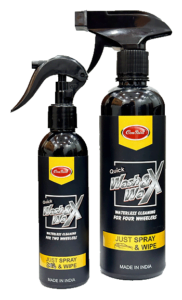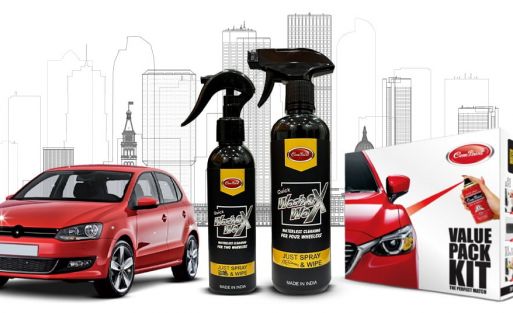Aerosol Spray Paint: The Basics
Aerosol Spray Paint is beneficial as it could be used by people as a quick, semi-permanent painting solution for their vehicle, which is available in 40 exciting colors to choose from. These handy spray paint cans are designed for creative people to work with colors and can be used for metals, woods, plastics, fiber sheets, refrigerators, artificial flowers, graffiti, automobile parts, cycles, bicycles, helmets, and various other objects.
Aerosol spray paint, also known as rattle cans, is manufactured and sealed in a pressurized container (can or tin). The paint is dispersed by depressing a nozzle at the top of the can, connected to a valve inside the can. Aerosol Spray Paint provides a smooth, evenly coated surface, unlike many standards, rolled or brushed paint finishes.
These spray paints have been used all over the country commercially and industrially by consumers; however, they have dramatically evolved over time. Standard pressure cans are now used for quicker and thicker coverage, whereas, lower pressure can achieve more control and increased flexibility.
With the advancement of technology, we can now purchase cans with a higher-pressure system. This gives a much wider and more even finish, along with new distribution nozzles, providing you with a much more professional finish on your project, even if you are a novice.

How To Use Aerosol Paint Can?
- Before using the can, shake well to mix the components inside. (There is a small ball inside the can which assists in mixing up the internal components)
- Make sure the area you want to paint is covered well and ideally, you can open the area up after painting to clear out any fumes and paint in the air.
- Don’t forget to wear a mask (ideally a double-filtered mask).
- Make sure you’re ready to paint the next stage without any interruption (i.e. if you have already primed your project, ensure nothing else needs to be sanded or re-primed before you can move onto the base coat of color).
- Move your arm from left to right over your substrate in a steady flow. This is called making a pass. Depressing the nozzle is a must before you hit the substrate and release after you have left the substrate, making even passes as you go.
- In case you have applied too much paint and you cause a run (a drop of paint running down the substrate) do not attempt to wipe or fix it when it’s wet. Allow the paint to dry properly and then sand the imperfection back and then remove any dust or grease and reapply a layer of paint.
- Make sure you turn the can upside down and spray away from the project until the gas is clear coming from the can. This will dispel the remaining paint in the valve/nozzle so that paint won’t dry in the line causing a blockage.

Storage Of Aerosol Paint Cans
- Aerosol paint cans are supposed to be stored in a cool, dry place away from any naked flames.
- Garages, external sheds, laundries, bathrooms and etc. should be avoided as they can rust the can and cause the can to fail or rupture.
- Aerosol paint cans should be kept far away from any kind of corrosive chemicals (pool chemicals, drain cleaners, bleach, toilet and bathroom cleaners, all types of kitchen and laundry detergents and alkaline materials, etc.)
- Do not store aerosol paint cans in heated areas or where any metal work (fabrication, welding or next to a radiator etc.) is being carried out. Heat can lead the cans to potentially combust.
- Do not store aerosol paint cans in direct sunlight, heat can make the chemicals react and potentially combust.
- You should never pierce or burn the spray paint cans, even when they’re empty. There is a high possibility of some leftover chemical remnants or the pressured gas in the can, which could cause an explosion.
- One should not smoke while using an aerosol paint can or immediately afterwards, due to the chemical or the gas in the can.










